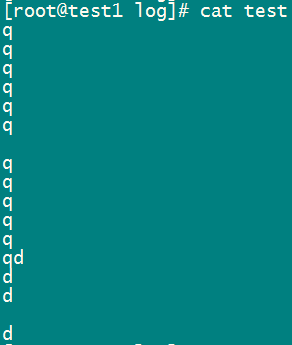日志管理
Posted
tags:
篇首语:本文由小常识网(cha138.com)小编为大家整理,主要介绍了日志管理相关的知识,希望对你有一定的参考价值。
日志管理
1.日志备份,以/var/log/messages为例
将本机/var/log/messages备份到174的/tmp下
# rsync -av /var/log/messages [email protected]:/tmp
#-a, --archive 归档模式,表示以递归方式传输文件,并保持所有文件属性
# -v, --verbose 详细模式输出
2.日志打包
# tar -cf log_file.tar /var/log/messages #-c创建包;-f包名称
3.日志清理
保留指定日志的后3行,其余全部删除
#!/bin/bash
#Usage:clear logfile,save last 3 lines.
#Author:chengyanli
#Date:2016/07/27
logdir=/var/log/ #the logdir
cd ${logdir}
filelines=`cat boot.log|wc -l` #the total lines of the logfile
dellines=$[${filelines}-3] #the lines you want to del
if [ ${dellines} -ge 1 ]; then #judge the dellines bigger than 1 or not
sed -i "1,${dellines}d" boot.log #del the line:1-dellines,save the last 3 lines
fi
4.日志完整性检查,使用md5
服务端:10.1.16.173
# md5sum tallylog > tallmd5
# mkdir check2
# mv tallylog check2/
# mv tallmd5 check2/
# scp -r check2/ 10.1.16.174:
客户端:10.1.16.174
# cd check2/ #一定要进入此目录
# md5sum -c tallmd5 #将校验码文件与源文件进行匹配,匹配上了,成功
修改tallylog,再进行校验,出错
也可以指明文件名
5.日志提取并上传到ftp的ftp目录中
awk ‘{if($0~"Installed")print}‘ yum.log #提取yum.log中包含Installed关键字的行
tail -n 3 boot.log #查看文件后3行内容
head -n 3 boot.log #查看文件前3行内容
uniq -c #去重并输出重复的个数
sort #排序
本文出自 “真水无香” 博客,请务必保留此出处http://chengyanli.blog.51cto.com/11399167/1846743
以上是关于日志管理的主要内容,如果未能解决你的问题,请参考以下文章






